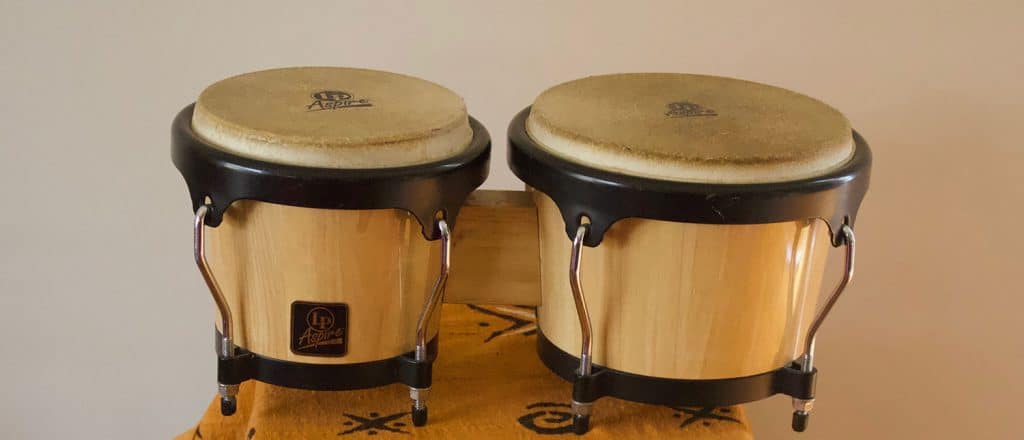Bongos

Bongos
Many people use the term Bongo Drum incorrectly to describe African hand drums in general.
The Bongo drums are in fact small Cuban drums played with the fingers. They consist of two small drums with wooden shells joined together. Skins are stretched over the top the drums to produce the sound, with the skin on one drum tuned higher than the skin on the other. Bongo Drums are played mainly in more contemporary forms of Cuban and Latin American music and are played together with the Conga drum and Timbali drum in Latin bands.
Ray runs special lessons in how to play the Bongo drums at his classes in Melbourne. They are not used regularly in Ray’s group lessons, but he does demonstrate how to play the Bongo Drum and the technique used on the Bongo Drum, when teaching the rhythms from Cuba during his group lessons in Melbourne.
You can contact Ray if you want to take private Bongo Drum lessons with Ray in Melbourne where he will show you the different rhythms and techniques on the Bongo in order to play in a typical Latin American or Salsa band. These lessons will show you how the rhythms of the Bongo Drum fit in with the rhythms of the Conga Drum and the Timbali Drum.
The basic rhythm played by the Bongo Drum is known as the “Martillo” which Ray will teach you how to play. When not playing this rhythm the Bongo Drum is used to improvise around the rhythms. When playing Latin music like Salsa, the Bongo player also plays a cowbell also called the “Bongo Bell”, which has its own specific rhythms. As you increase your knowledge of rhythms, Ray’s Melbourne lessons will show you how to improvise on the Bongo Drum and how the bongo player in a band moves from the Bongo drum to the Bongo bell and back again.
Strictly speaking the Bongo Drum is not a traditional instrument with a long history in Africa. It is a more recent invention that originated with the emergence of Mambo bands in Cuba around seventy to eighty years ago.